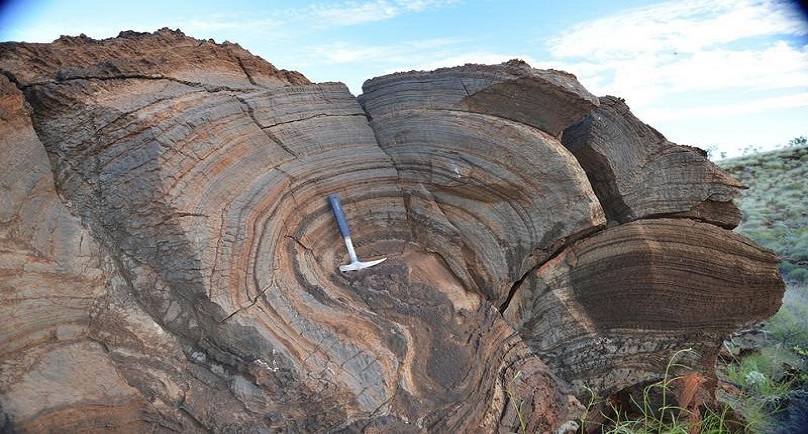Image: The layers on this 2.7 billion-year-old rock, a stromatolite from Western Australia, show evidence of single-celled, photosynthetic life on the shore of a large lake in this image released on May 9, 2016. Roger Buick/University of Washington/Handout via REUTERS
![]()
By Will Dunham
WASHINGTON (Reuters) – Tiny bubbles that formed inside volcanic rock 2.7 billion years ago are providing big insights into the conditions on primordial Earth.
Scientists said an analysis of gas bubbles trapped in ancient basalt rock that formed from ancient lava flows in western Australia showed the planet back then possessed a much thinner atmosphere, with air pressure half of what it is today.
That finding contradicts a long-held notion that Earth then had a thicker atmosphere to compensate for a fainter sun, with sunlight about 15 percent dimmer. The sun is slowly brightening over time, part of a star’s natural evolution.
Earth formed about 4.5 billion years ago. The planet 2.7 billion years ago was still much different than it is today.
In addition to the fainter sun, the air lacked oxygen, the moon was closer so tides were stronger, Earth spun more quickly so days were shorter, and the only life forms were single-cell microbes, said study leader Sanjoy Som, CEO of Seattle-based Blue Marble Space, a nonprofit organization focusing on space science research, education and public outreach.
The findings demonstrate that “a planetary environment completely different than modern Earth can sustain life on its surface,” said Som, who worked on the study while at the University of Washingto?n and is now based at NASA’s Ames Research Center in California.
“Life doesn’t need conditions like modern Earth to survive and thrive. This is important in our quest for habitable environments in extra-solar planets,” Som added.
The scientists used sophisticated scanning technology to analyze the size and distribution of bubbles within the ancient lava rock found along the shores of Australia’s Beasley River that solidified at sea level.
Lava flows cool rapidly from top and bottom, with bubbles trapped at the bottom being smaller than those at the top. The size difference in these bubbles provided a record of the atmospheric pressure pushing down on the molten rock as it cooled, the researchers said.
The findings suggest Earth’s atmosphere was rich in greenhouse gases.
“This study doesn’t yield direct knowledge about the air composition,” Som said. “Nonetheless, because most of the air pressure is nitrogen, and you needed greenhouse gases to compensate for a faint sun, methane – a powerful greenhouse gas – was a likely important constituent, as well as water vapor – another powerful greenhouse gas.”
The research was published in the journal Nature Geoscience.
(Reporting by Will Dunham; Editing by Sandra Maler)
Copyright 2016 Thomson Reuters. Click for Restrictions.


